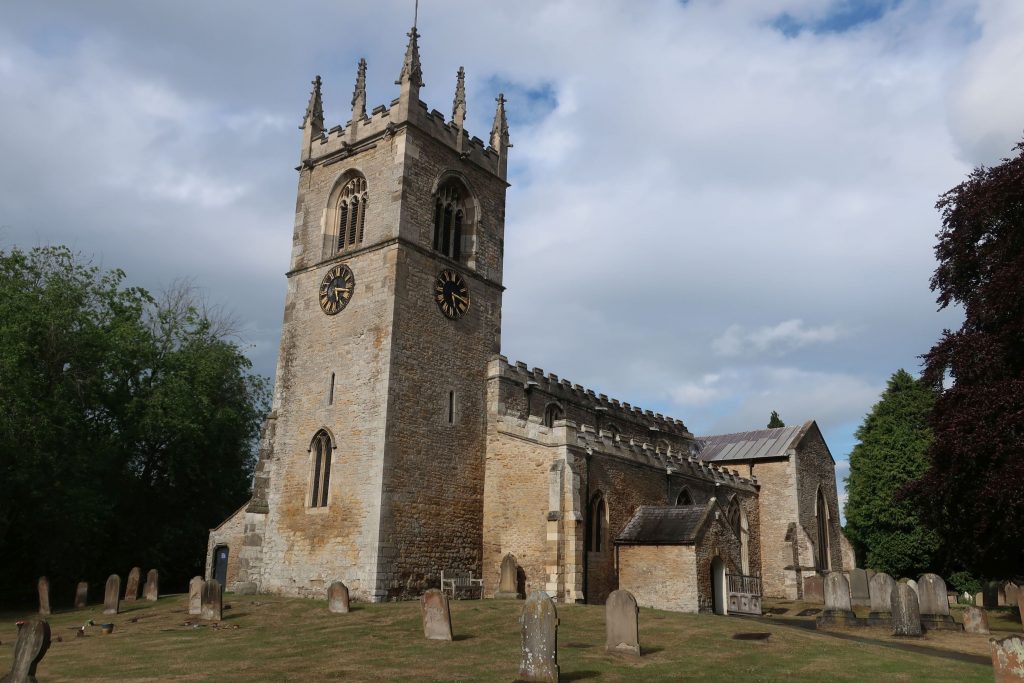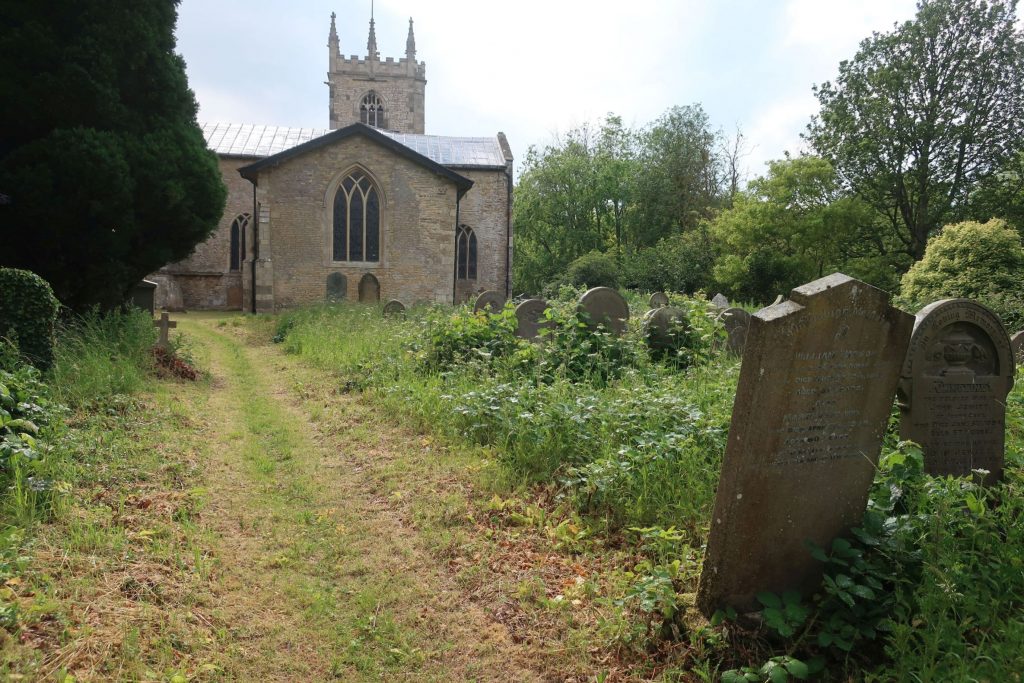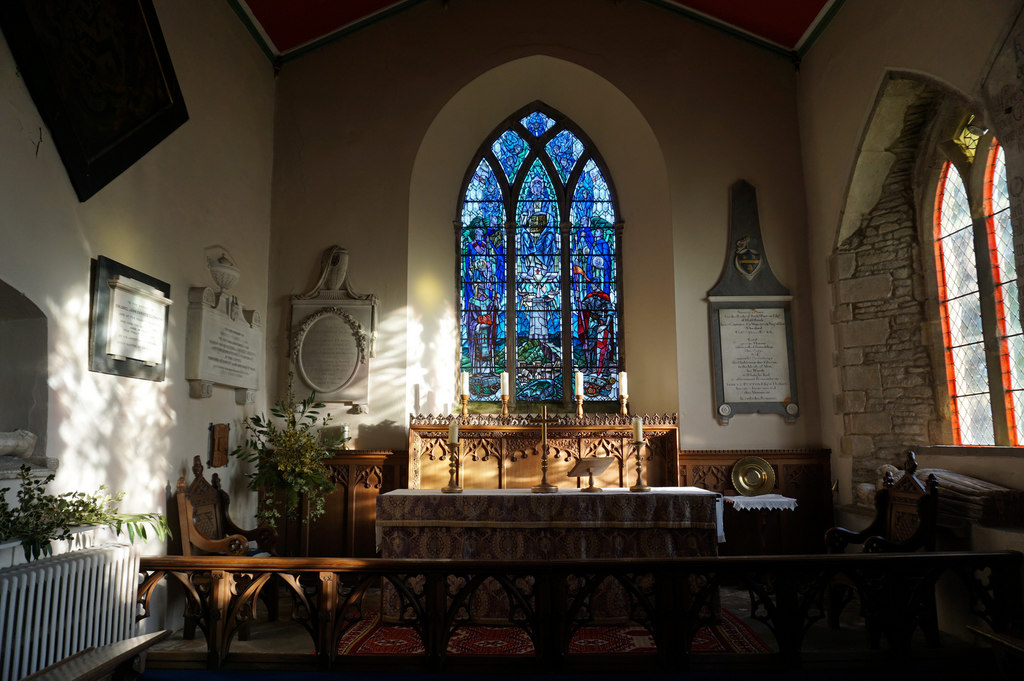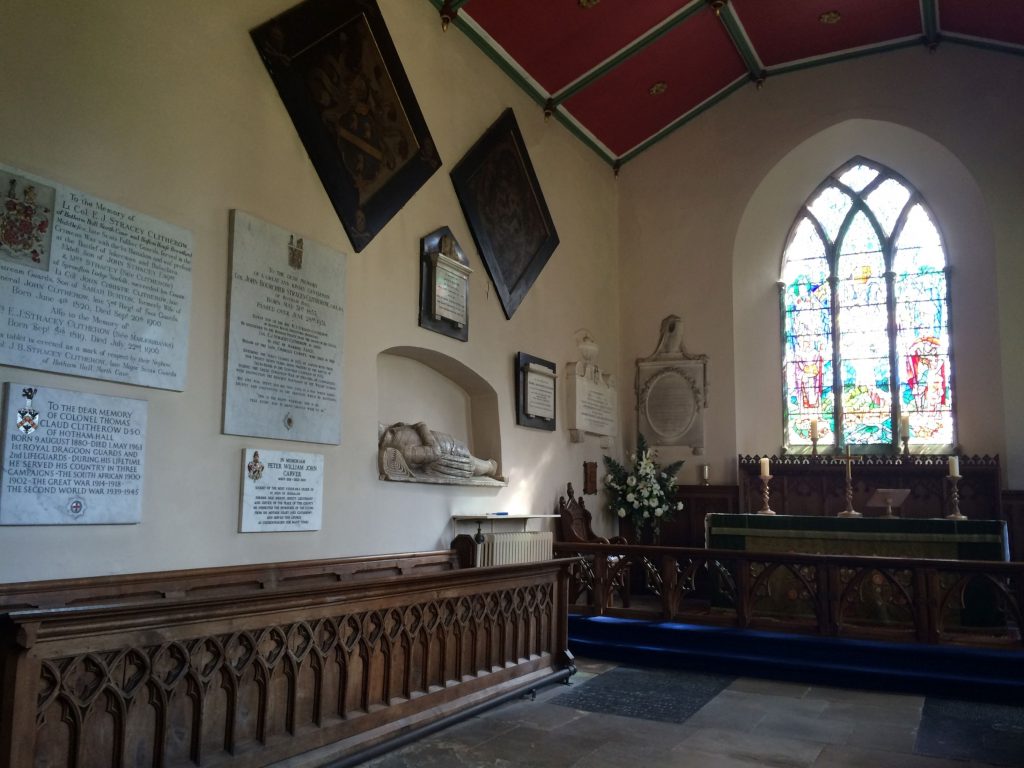

The parish of North Cave is situated in what was once the wapentake of Hartill, Hunsley division, part of the historical East Riding of Yorkshire (see maps in Introduction). Before the 1832 parish boundary changes it included the sub-parishes and localities of Drewton, Everthorpe and South Cliffe, the latter being separated from the main body of the parish by that of Hotham. The parish extended over sixteen kilometres, from the flat lands of the Vale of York in the west, over the Roman road of Ermine Street to just below High Hunsley in the east, the highest point of southern Yorkshire Wolds. Here the scenery is rolling chalk lands interspersed with valleys, Drewton Wold and Dale being fine examples. The name Drewton is said to derive from Druids’ town and the large rocky outcrop at the head of its tributary dale is reputedly an ancient site of Druid worship. Tradition has it that St Augustine preached the gospel to the pagan Anglo-Saxons at the rock, before leading his new converts into the dale to baptise them in one of its many springs. St. Austin’s Stone, as it is known today, stands in the woods above Austin’s Dale, both the private property of the Drewton estate, so viewing entails some negotiation of barbed wire and undergrowth, as visitors are definitely not welcome!
 Before the Conquest there were four manors in North Cave. Of the two smaller manors, one was held by the archbishop of York and he retained it as tenant in chief in 1086, the lords being the canons of St. Peter, York. The other was held by Gamal, son of Osbert, as part of his lands in North Cave and Little Weighton, passing in 1086 to Hugh, son of Baldric, as both lord and tenant in chief. Of the two larger manors, one was held by three Anglo-Saxons and awarded to Nigel Fossard, with Count Robert de Mortain as tenant in chief, and the other held by six Anglo-Saxons, passing first to William Malet and later to his son Robert as both lord and tenant in chief in 1086. The Malets also acquired land in Drewton, part of which descended through the Mowbrays and Mortimers and later the Vescys and finally to the Atons in the early 1300s. The other part descended with the Cottingham holdings of the Stutevilles, eventually reverting to the Crown. Durham Priory had lands in North Cave, Drewton and Everthorpe from the mid 1100s to the early 1500s. At around this time the Metham family was building a large estate in the area, which had become known as North Cave manor by 1621. In 1773 it was sold to the Burtons, later passing by marriage to the Clitherows, several of whose heirs were in fact heiresses, their husbands adopting the Clitherow surname to ensure its continuation.
Before the Conquest there were four manors in North Cave. Of the two smaller manors, one was held by the archbishop of York and he retained it as tenant in chief in 1086, the lords being the canons of St. Peter, York. The other was held by Gamal, son of Osbert, as part of his lands in North Cave and Little Weighton, passing in 1086 to Hugh, son of Baldric, as both lord and tenant in chief. Of the two larger manors, one was held by three Anglo-Saxons and awarded to Nigel Fossard, with Count Robert de Mortain as tenant in chief, and the other held by six Anglo-Saxons, passing first to William Malet and later to his son Robert as both lord and tenant in chief in 1086. The Malets also acquired land in Drewton, part of which descended through the Mowbrays and Mortimers and later the Vescys and finally to the Atons in the early 1300s. The other part descended with the Cottingham holdings of the Stutevilles, eventually reverting to the Crown. Durham Priory had lands in North Cave, Drewton and Everthorpe from the mid 1100s to the early 1500s. At around this time the Metham family was building a large estate in the area, which had become known as North Cave manor by 1621. In 1773 it was sold to the Burtons, later passing by marriage to the Clitherows, several of whose heirs were in fact heiresses, their husbands adopting the Clitherow surname to ensure its continuation.
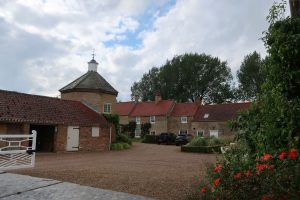
From at least the early 16th century the Methams had made North Cave Hall their occasional and later permanent residence, carrying out alterations and improvements over the nearly three centuries of their lordship. Flanked on the west by the church and on the east by the 18th century Manor farm, the hall was demolished by its next owners, the Burtons, but its grounds remain much the same today. Sir George Metham, who inherited North Cave manor from his father in 1763, spent large amounts of money reclaiming its marshy land and landscaping its grounds. This included creating the large lake that still extends over the width of the property to the north of the church and Manor farm.
Hotham Hall stands at the northern extremity of the parish of North Cave, nearer in name and distance to Hotham, a kilometre north of the church and Manor farm. It was built by the Burton family, initially yeoman farmers from Cottingham, who became landed gentry in the area largely through substantial legacies. They purchased the manor of Hotham in 1719 and immediately started building the five bay central core of their future residence. In the 1773 their neighbour, Sir George Metham, was forced to sell the manor of North Cave owing to financial difficulties, and Robert Burton took the opportunity to extend his lands further south by buying it. At the time the road to Beverley crossed the parish to the north of the lake. It was the Burtons who had the road moved to the south of the church and manor farm, removing the inconvenience of splitting their extended park into two parts and providing themselves with a sweeping view. They also extended Hotham Hall by adding the three bay pavilions on either side of the core building. The west pavilion and its annexe were demolished in 1871 and replaced by a white brick service wing. A large glazed porch was also built at the same time.
 | 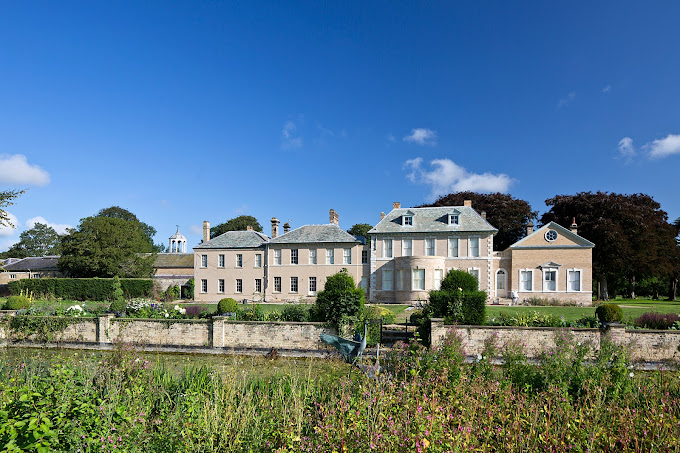 | 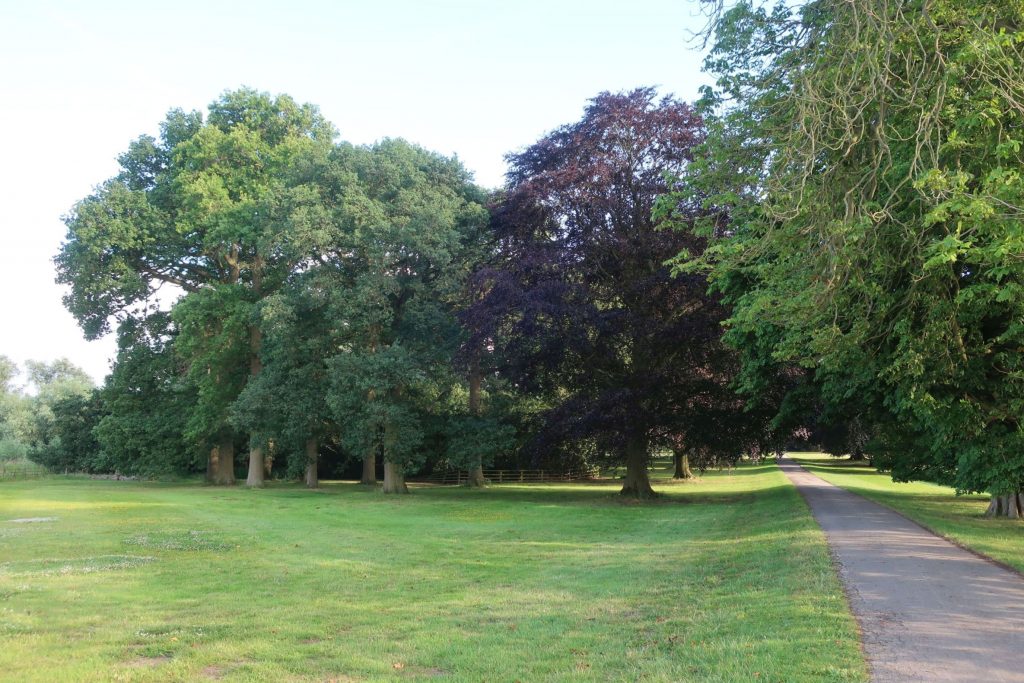 |
The church at North Cave was dedicated to All Saints in 1318 and described at the time as new built. Perhaps rebuilt would be a better description as most of the building appears to date from the 13th century, including the nave. There are north and south aisles, a transept, a 15th century embattled south clerestory, a mid 18th century south porch and a two stage tower containing five bells, the lower part dating from the late 12th century and the upper surmounted by a 15th century embattled parapet with pinnacles. The chancel seems to have been rebuilt in the early 19th century probably with the purpose of displaying the many memorials of the prominent families of North Cave. A Metham couple of the Jacobean era is commemorated by two recumbent alabaster effigies in and along the north and south walls; other Methams have plaques on the floor. The Burtons and Clitherows are well represented by marble tablets on the walls, and a Clitherow is also commemorated in the east window.
Anthony Pickering, a gentleman of the 15th generation of the Pickerings of Oswaldkirk, married Joan, the widow of Hugh Clitherow of Brantingham, who brought lands in the area North Cave to the marriage, though none in the parish itself. Anthony’s elder brother John was the founder of the Pickerings of Holderness who in turn spawned the Pickering of Wawne, and it was not before the 26th generation of the latter line that a Pickering – Frank Pickering, a blacksmith – settled in North Cave.
Sources:
https://www.genuki.org.uk/big/eng/YKS/ERY/NorthCave
https://intel-hub.eastriding.gov.uk/parish-profile/#/view-report/bd6a0cb7f85a46998f874a42bfd0dc8e/PP104
https://en.wikipedia.org/wiki/North_Cave
https://opendomesday.org/place/SE8932/north-cave
https://opendomesday.org/place/SE8736/south-cliffe
Victoria History of the County of York, East Riding, vol. 4, pp. 23-29 (not online)
Bulmer’s History, Topography and Directory of East Yorkshire with Hull 1892, pp. 575-580: https://specialcollections.le.ac.uk/digital/collection/p16445coll4/id/324025
History and Topography of Yorkshire, vol. 2, York, Ainsty, East Riding, pp. 531-533: https://books.google.fr/books?redir_esc=y&id=unEKAQAAMAAJ
The Buildings of England, York and the East Riding, pp. 624-627: https://archive.org/details/yorkshireyorkeas0000pevs/page/624
Hotham Hall: https://historicengland.org.uk/listing/the-list/list-entry/1203450?section=official-list-entry
Hotham Hall, History and Architecture: https://docs.planning.org.uk/20210826/116/QNWNLSBJJZ800/37vur2v85fxi7571.pdf
Hotham Hall Garden Design Flythrough: https://www.youtube.com/watch?v=b3XjMMC1usQ
Church of All Saints: https://historicengland.org.uk/listing/the-list/list-entry/1203419?section=official-list-entry


